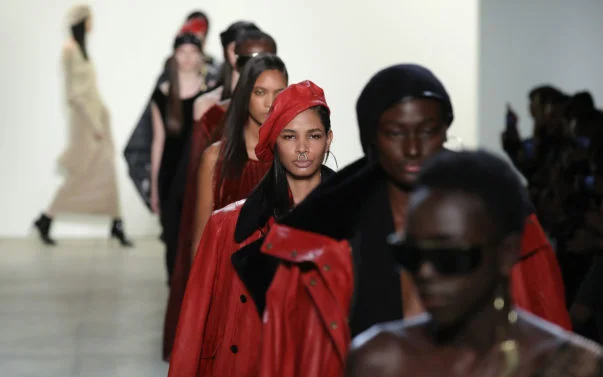Will Fashion Hold Tight To Its Embrace Of Black Model Beauty? Here's Hoping
/Tiya Miles is a professor of American culture and history at the University of Michigan, as a member of the Program in American Culture, Center for Afro-American and African Studies and Native American Studies Program. In 2011 Miles won a five-year grant MacArthur Fellowship for her intellectual prowess -- which is to say that Tiya Miles knows that's going on in her world.
When the topic is models, Miles believes that Hollywood, fashion and beauty businesses are responding to the popular public movements demanding change. The changes are worldwide, but when the subject is fashion models, the lens centers on New York, London, Milan and Paris. Striking an ironic note, Miles sees our growing consciousness of the "importance of visibility and voclaity for people of color, particularly black people" as a positive outcome of the threatening rise of white nationalist identity across America and Europe.
“It is no coincidence that this runway model trend and movies like 'Black Panther' "have arrived at the same time," Prof. Miles told the New York Times after the Fall 2018 fashion shows. "The two are interlocked, as both have been incubating in what feels a like a growing crusade with many of the hallmarks of the Black Power movement of the 1960s and 1970s. They are part of a pushback against the dominant pressures of European and American white centrality.”
Patrizia Pilotti, a casting director for brands including Lacoste and Valentino, states the obvious. “I have never seen so many different girls on agents’ books as I did this season. But there is one reason I cast so many dark-skinned girls, and one reason only: their beauty,” Ms. Pilotti said. She was also emphatic that she was not adhering to any outside demands or quotas when it came to casting for those shows. “This season, for these collections, these girls are the ones that spoke to me.”
The most diverse shows were in New York, where nonwhite models were 37%, followed by London at 35%. Milan and Paris were 24% and 26% respectively.
Ms. Miles warned that the embrace of black beauty needed to be more than just a passing trend linked to a demand for new faces. “We still have a problem with people of color being exoticized, embraced temporarily as a flavor of the month, ” she said. “So while I feel a deep sense of pleasure at such a range of looks and skin colors on the runway, I am not celebrating just yet.”
Women of Color Archives @ AOC
Note, these models refer to themselves as WOC, based on Google searches.
